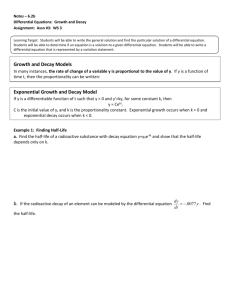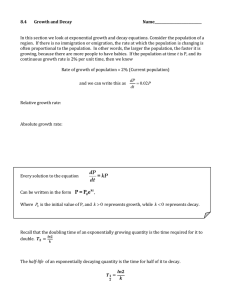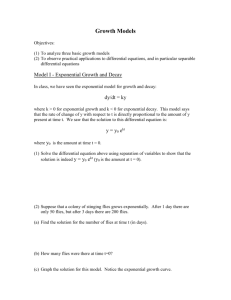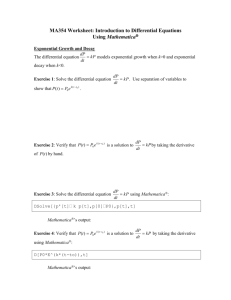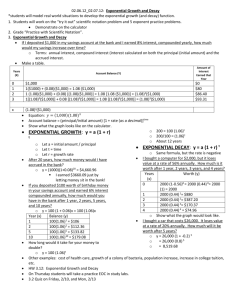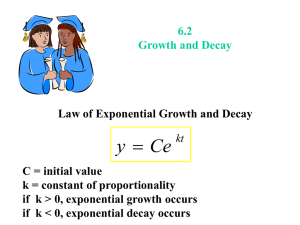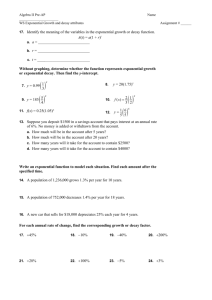6.2: Differential Equations: Growth and Decay
advertisement
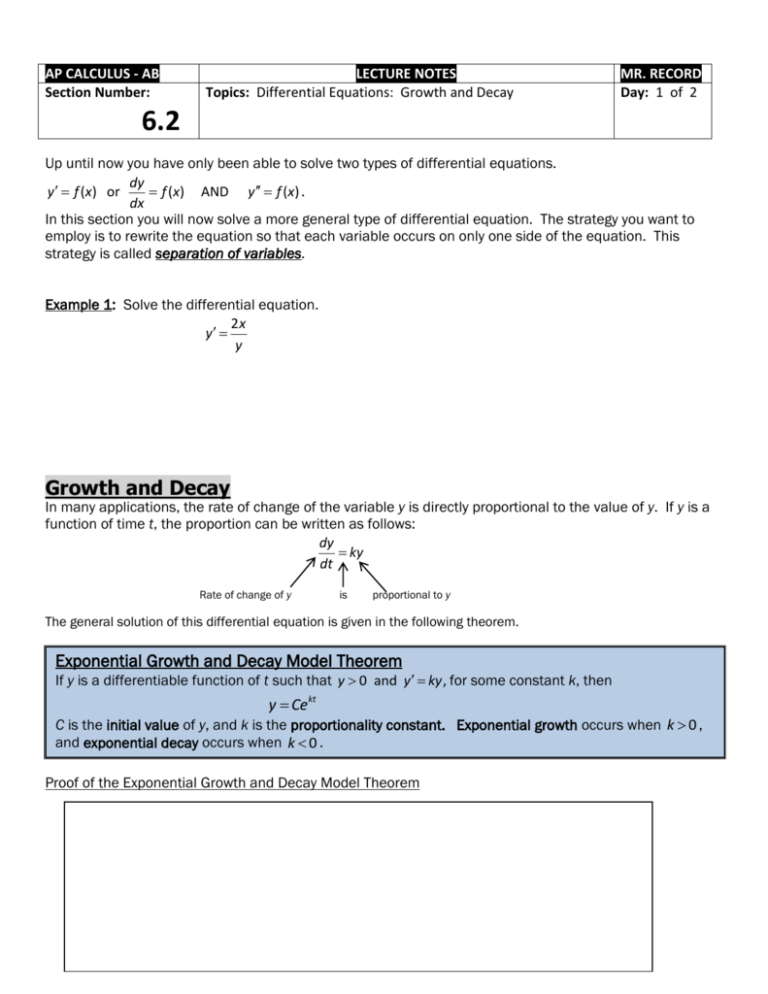
AP CALCULUS - AB Section Number: LECTURE NOTES Topics: Differential Equations: Growth and Decay MR. RECORD Day: 1 of 2 6.2 Up until now you have only been able to solve two types of differential equations. dy y f (x) or f (x) AND y f (x) . dx In this section you will now solve a more general type of differential equation. The strategy you want to employ is to rewrite the equation so that each variable occurs on only one side of the equation. This strategy is called separation of variables. Example 1: Solve the differential equation. 2x y y Growth and Decay In many applications, the rate of change of the variable y is directly proportional to the value of y. If y is a function of time t, the proportion can be written as follows: dy ky dt Rate of change of y is proportional to y The general solution of this differential equation is given in the following theorem. Exponential Growth and Decay Model Theorem If y is a differentiable function of t such that y 0 and y ky , for some constant k, then y Cekt C is the initial value of y, and k is the proportionality constant. Exponential growth occurs when k 0 , and exponential decay occurs when k 0 . Proof of the Exponential Growth and Decay Model Theorem Example 2: The rate of change of y is proportional to y. When t 0, y 2. When t 2, y 4 . What is the value of y when t 3 ? y 7 6 5 4 3 2 1 x 1 2 3 4 Graphically, this is what Example 2 looks like. Application of Growth and Decay Half-Lives Revisited You may recall our discussion about these from Section 5.5. We will take a slightly different approach with these problems now that we have a formal Growth/Decay Model with which to work. We work on the assumption that the rate of decay is proportional to the amount of the material. The half-lives of some common radioactive isotopes are as follows: Uranium (236U) 4,510,000,000 years Plutonium (239P) 24,360 years 14 Carbon ( C) 5730 years Radium (226Ra) 1620 years Einsteinium (254Es) 270 days Nobelium (257No) 23 seconds Example 3: Suppose that 10 grams of the plutonium isotope Pu-239 was released in the Chernobyl nuclear accident. How long will it take for the 10 grams to decay to 1 gram? Example 4: Suppose an experimental population of fruit flies increases according to the law of exponential growth. There were 100 flies after the second day of the experiment and 300 flies after the fourth day. Approximately how many flies were in the original population? Round to the nearest fly. AP CALCULUS - AB Section Number: LECTURE NOTES Topics: Differential Equations: Growth and Decay MR. RECORD Day: 2 of 2 6.2 Example 5: Four months after it stops advertising, a manufacturing company notices that its sales have dropped from 100,000 units per month to 80,000 units per month. If the sales follow an exponential pattern of decline, what will they be, to the nearest unit, after another 2 months? Newton’s Law of Cooling Newton’s Law of Cooling states that the rate of change in the temperature of an object is proportional to the difference between the object’s temperature and the temperature of the surrounding medium. Example 6: Let y represent the temperature (in F) of an object in a room whose temperature is kept at a constant 60 . (Sort of like my classroom a times! ) If the object cools from 100 to 90 in 10 minutes, how much longer will it take for its temperature to decrease to 80 ?

